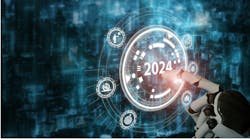Automakers Embrace High-tech in Safety Drive
Automakers displaying the latest technology at the Consumer Electronics Show (CES) are relying on sensors, digital cameras and connectivity in a drive towards a common goal -- eliminating accidents.
Germany's Mercedes-Benz is among those pursuing what is known as "active security" to build a car that would have a "less than one percent chance of getting into a crash," outside of a driver being drunk, a spokesman said.
Doug Newcomb of auto industry experts Edmunds.com said that while they don't want to admit it too openly, automakers are even working on "autonomous" cars like the celebrated self-driving vehicles tested by Internet giant Google. "It's very controversial but the Google experience, which saw just a single accident -- and that due to human error -- tends to show that "cars are smarter than many drivers."
Don't expect to turn over the steering wheel anytime soon, but experts say the improved auto safety features on display at the CES gadgets fair here in Las Vegas and in research labs are leading to a "semi-autonomous" car. In some luxury models, onboard computers can already take control of the brakes or the steering wheel.
Ford currently offers a lane-keeping system which features a digital camera mounted on the windshield that is focused on the lane markings ahead as a car drives down the road. "If you drift off your lane, there will be an audible warning and a shake of the steering wheel," said Wes Sherwood, a Ford spokesman. "It will steer you back" in the event of repeated incursions."
Restricted for now to high-end models, the lane-keeping aid will be extended for the first time this year to mid-range vehicles like the Ford Explorer and the Ford Fusion. "Consumers really question how much control they want the car to take," Sherwood said. "(But) in general, people like it. It's very subtle."
Ford has sold 300,000 vehicles equipped with the system since 2009.
Mercedes has a similar lane-keeping system and another for blind spot monitoring to detect the presence of an unseen car to the side. Radar-like sensors are also being used to make sure drivers keep a safe distance from cars in front of them and can brake automatically in the event of a sudden deceleration. The increased connectivity in cars will also help keep a driver better informed, leading to greater safety. "A connected car is proactive," Dieter Zetsche, the chairman of Daimler and head of Mercedes-Benz cars, said during a CES keynote address.
Mercedes-Benz's telematics system, mbrace2, is capable of scouring the Web for information on safety hazards, such as ice, in order to alert a driver.
Newcomb of Edmunds.com said he believes the connectivity in a vehicle will increasingly come via the omnipresent smartphone, which automakers are already synching with the LCD screens on dashboards.
Over time, the device seen as a leading cause of many accidents could help to prevent them.
Copyright Agence France-Presse, 2011



